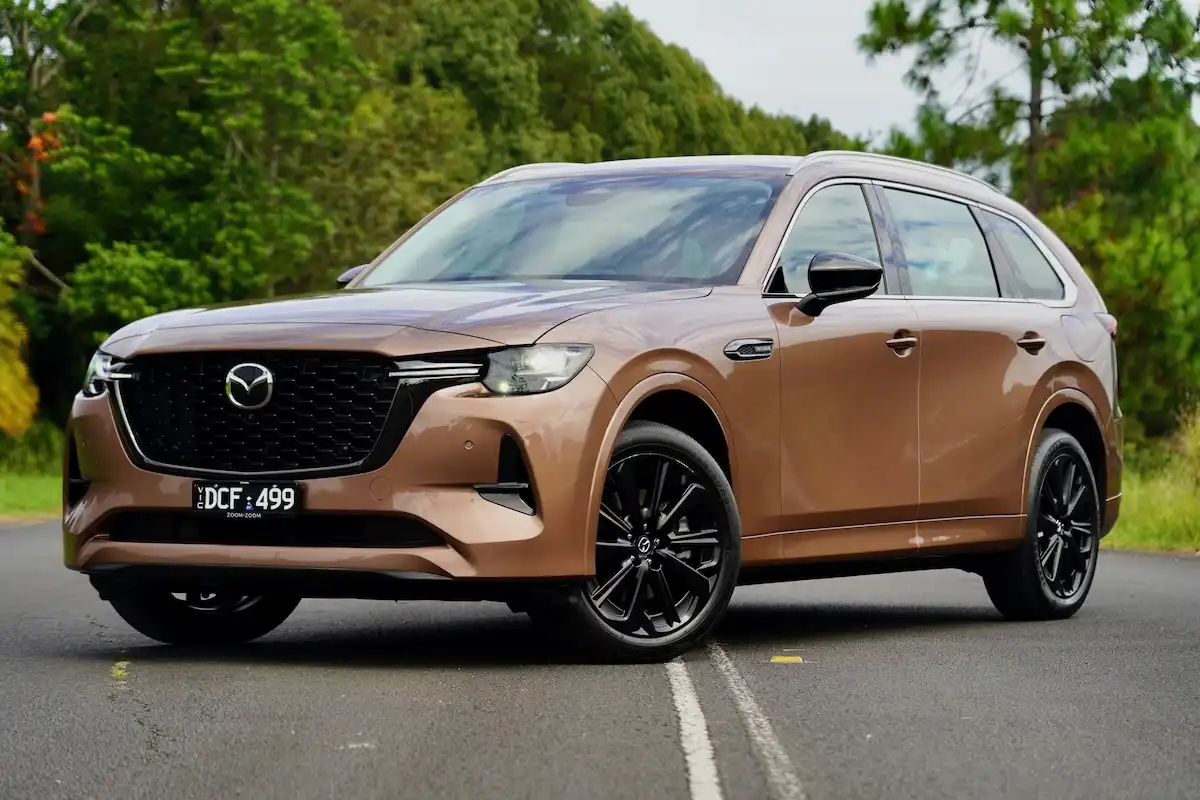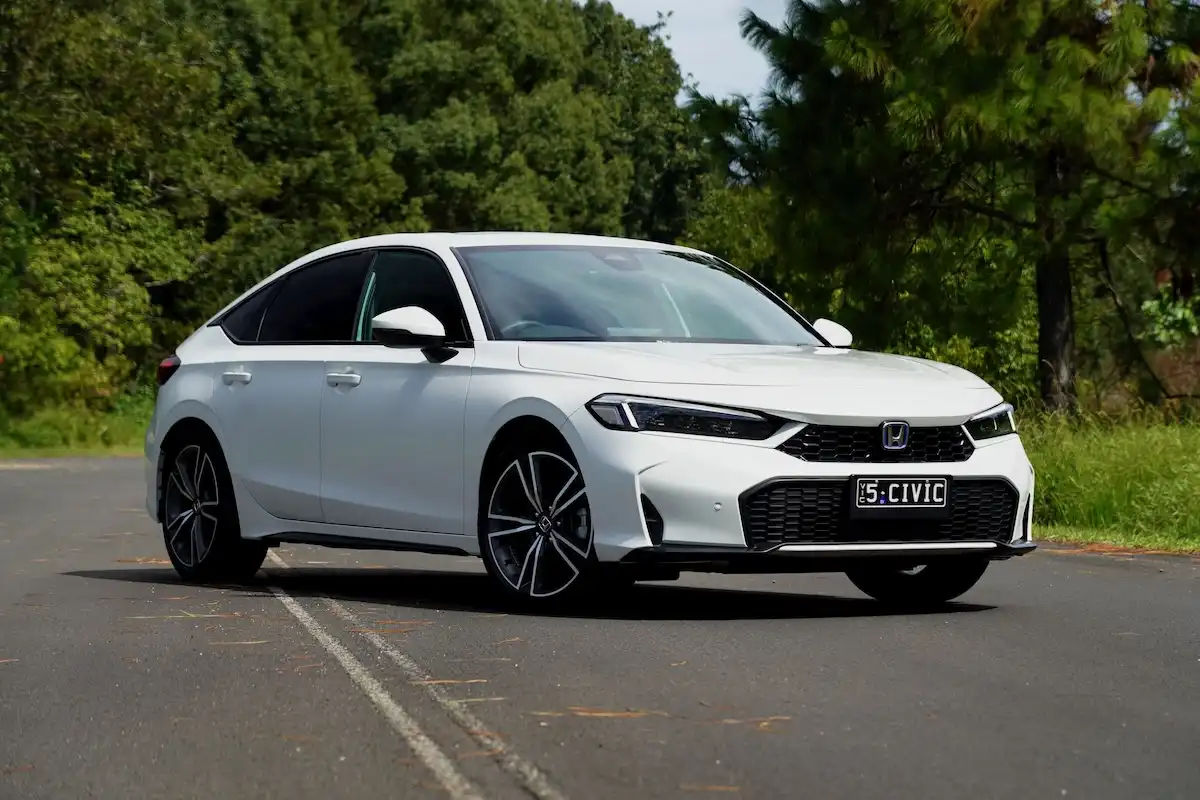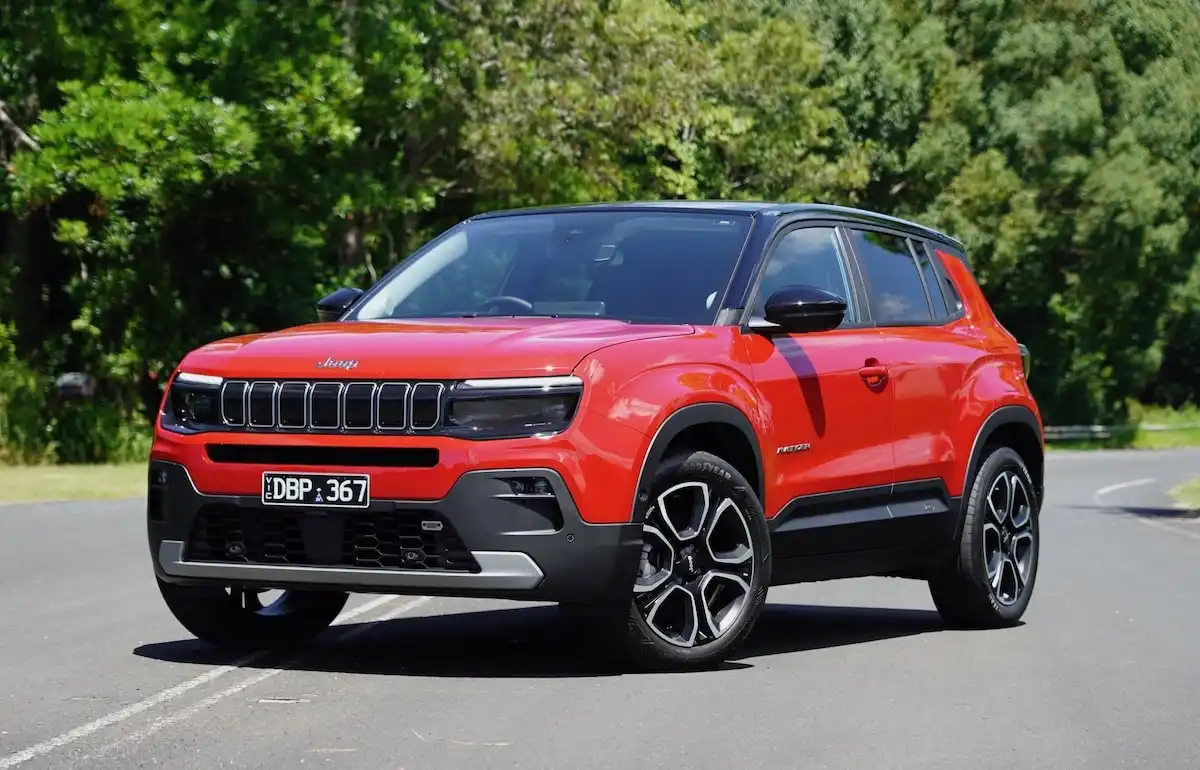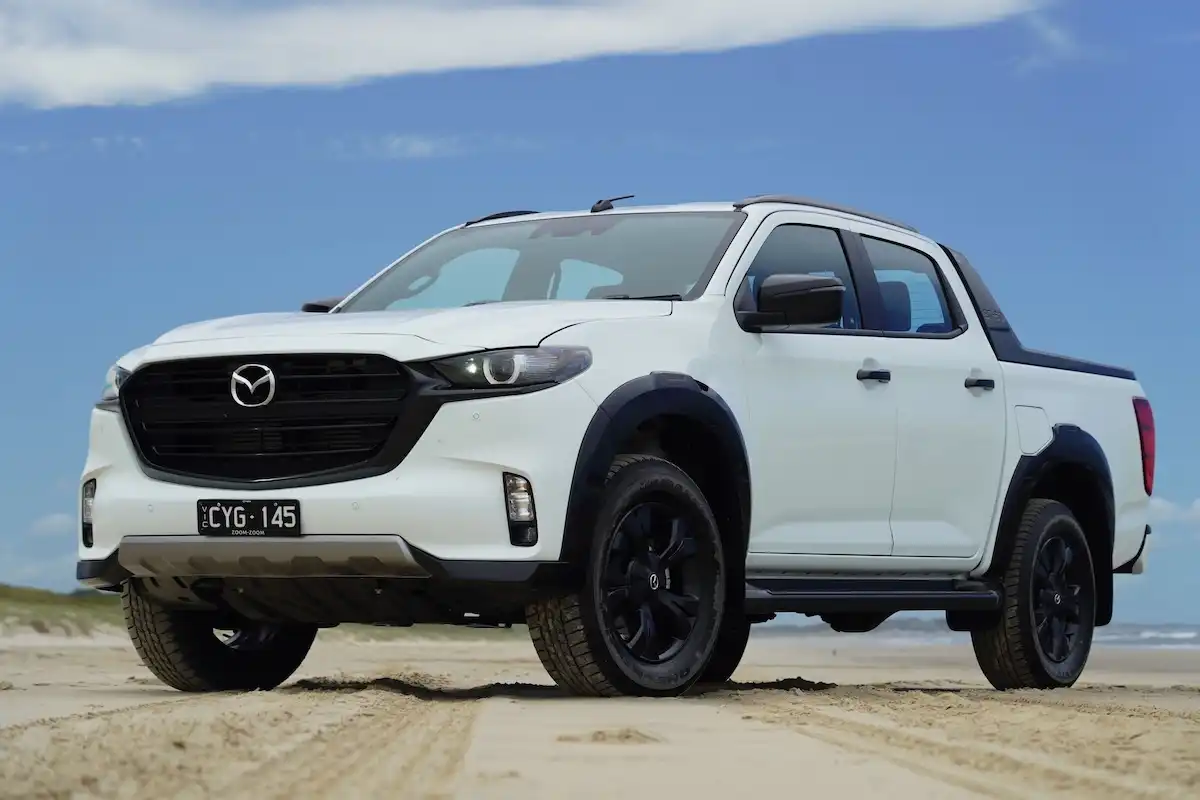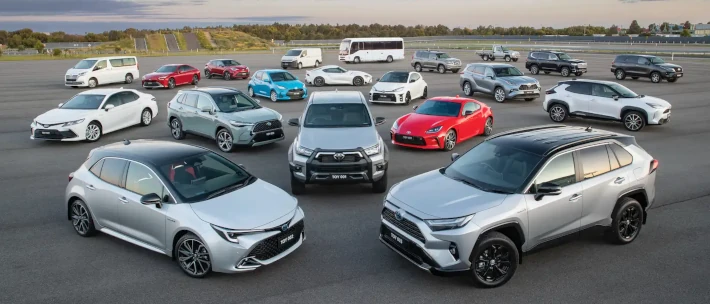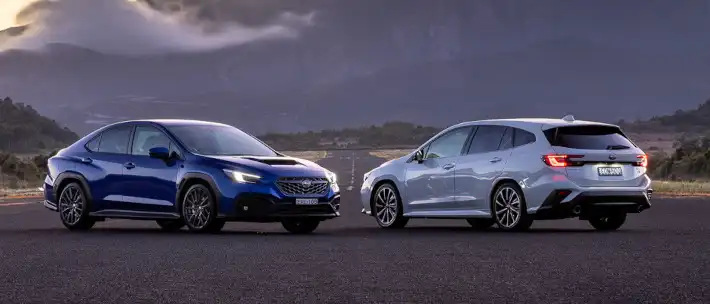That’s right, underneath the skin, the Mitsubishi Express is an updated version of the Renault Traffic cargo van, with a few minor styling tweaks to separate it from its French sibling. The question remaining, however, is just how well has Mitsubishi positioned the latest Express amongst its competitors in the commercial van segment, and how does it stack up against its rivals? Let’s find out.
Starting Price: $38,490
OnlineAuto Savings: Enquire now
Mitsubishi Express (GLX SWB) Specifications
| Model Date | 2022 |
| Make | MITSUBISHI |
| Model | EXPRESS |
| Series | SN MY22 |
| Variant | GLX SWB |
| Body | 4D VAN |
| Fuel type | DIESEL |
| Transmission | 6 SP MANUAL |
| Drive | FWD |
| Engine | TTCDI |
| Engine capacity | 1598 |
| Engine configuration | DUAL OVERHEAD CAM / 16 valves |
| Engine RPM | 3500 / 1500 |
| Cylinders | DTT4 |
| Torque | 340 |
| KW | 103 |
| Fuel tank size | 80.0 |
| Fuel usage specs | 6.2 / 0.0 |
| CO2 | 164 |
| ANCAP security rating | 0 |
For more details and other variants, check Mitsubishi Express car page.
Need help narrowing down your choices?
Get in touch with one of our Car Buying Specialists today
Request a quoteHow Much Does It Cost?
The Mitsubishi Express lineup kicks off from $39,490 drive-away for the entry-level Express GLX short wheelbase variant with a manual gearbox, while the short wheelbase Express GLX automatic is priced at $44,490 drive-away.
Moving to the Express GLX long wheelbase with a manual gearbox comes at a cost of $41,490, while the GLX long wheelbase automatic is priced at $46,490 drive-away. Finally, the range tops out in the form of the GLX+ long wheelbase automatic, which is priced at $46,990 drive-away.
How Much Can OnlineAuto Save You?
You could save money by using one of OnlineAuto’s car agents to assist you in finding the best car for you. As one of the leading car buying services in Australia, our team have access to a range of dealerships across the country to help find you the best deal.
What Features Does the Mitsubishi Express Have?
The entry-level manual Express GLX short and long wheelbase variants come riding on a set of 16-inch steel wheels, and receives a set of barn doors for the rear, sliding side doors, a bench seat for three passengers up front, smartphone docking with a USB charger and Bluetooth connectivity, cruise control, rear-mounted parking sensors, daytime running lamps and stability control.
Opting for the Express GLX automatic adds a set of automatic rain-sensing wipers and dusk-sensing headlights, fog lights and a six-speed dual-clutch transmission. The Express GXL long wheelbase automatic builds on that feature set, while receiving a rear-view camera with a set of rear-mounted parking sensors, a 7.0-inch infotainment system with Apple CarPlay and Android Auto, as well as satellite navigation.
Finally, the range-topping GLX+ variant is available with a choice of barn doors or a traditional tailgate, and receives a passenger bench seat with storage underneath, a folding centre seat with mobile office and a bulkhead with a window and trapdoor.
Range Features:
-
16-inch steel wheels
-
Rear barn doors
-
Bench seat for three passengers including driver
-
Two sliding side doors
-
Smartphone dock with Bluetooth connectivity
-
USB charger
-
Cruise control
-
Rear-mounted parking sensors
-
Daytime running lamps
-
Stability control
-
Automatic rain-sensing wipers (GLX short wheelbase auto)
-
Automatic dusk-sensing headlights (GLX short wheelbase auto)
-
Fog lights (GLX short wheelbase auto)
-
Six-speed dual-clutch automatic transmission (GLX short wheelbase auto)
-
Rear-view camera with parking sensors (GLX long wheelbase auto)
-
7.0-inch infotainment system with Apple CarPlay & Android Auto (GLX long wheelbase auto)
-
Satellite navigation (GLX long wheelbase auto)
-
Passenger bench seat with storage underneath (GLX+)
-
Folding centre seat with mobile office (GLX+)
-
Bulkhead with a window and trapdoor (GLX+)
Mitsubishi Express Colours
The latest range of Mitsubishi Express units are available in a choice of white, red, silver and black paint finishes.
Is it Comfortable to Drive?
The driving dynamic and potential for moving heavy loads of cargo depends on which variant you opt for. Within the Express lineup, there are two diesel engines available, with the larger of the two no doubt the pick of the engine bunch.
The entry-level manual variants receive a 1.6-litre twin-turbo diesel unit producing 103kW/340Nm of torque, while the automatic lineup receives a more powerful 2.0-litre diesel engine producing 125kW/380Nm of torque, which is paired with a six-speed dual clutch transmission. Overall, the automatic variant is the more desirable of the two, offering more cargo-moving potential and a more relaxing, accessible driving dynamic thanks to its automatic transmission.
As a complete package, then, the Express lineup offers a remarkably simple driving recipe that is approachable for those new to the commercial van segment, featuring lightweight steering that makes low-speed maneuvering and parking an easy task, with a heap of power available to the driver to get up and moving, even with a heavy load of cargo in the rear.
Is the Interior Practical and Spacious?
Up front, the Mitsubishi Express retains a simple, ergonomic and user-friendly cockpit that shares more than a few interior details with the Renault Traffic. Overall, though, this isn’t a bad thing, considering the practical design inside the cockpit which gives the driver and front passenger a heap of space, as well as some practical elements for loose items.
One of the best things about the interior of the Express is that Mitsubishi has decided to package a set of sliding doors either side, rather than just one as standard, which makes the process of loading and unloading cargo easier and more flexible. Typically, manufacturers will offer one sliding door, and charge a premium for a pair, which is a nice selling point for the Express.
How Much Cargo Can the Mitsubishi Express Handle?
Cargo carrying capacity is no doubt one of the most important aspects of any commercial-based vehicle like the Express, and we’re glad to report that there is a world of potential in the rear. Officially, the short wheelbase variant has a cargo volume rated at 5.2m3, or 5,200L, while the long wheelbase is rated at 6m3, or 6,000L.
Both the short and long wheelbase variants of the Express have a cargo bay height rated at 1,387mm, while the overall width figure stands at 1,662mm, with 1,268mm on offer between the wheel arches. The short wheelbase has a load length of 2,537mm, which is enough space for two full-sized pallets in the rear, while the long wheelbase raises this figure to 2,937mm, equating to around 40cm of spare room with two commercial pallets in the rear.
In terms of payload weight capacity, the short wheelbase manual and automatic variants are rated at 1,150kg and 1,115kg respectively, while the long wheelbase manual and auto have a payload capacity rated at 1,200kg and 1,150kg respectively. Braked towing capacity for the Express range stands at 2,000kg.
Is it Safe?
Safety is one area that the Mitsubishi Express falls short when compared to its main rivals. While a number of its key competitors boast five star ANCAP safety ratings, the Mitsubishi Express is one of the few vehicles on the road today that has been awarded a zero star ANCAP safety rating.
The Mitsubishi Express received adult occupant protection scores of 55 out of 100, 40 for vulnerable road user protection and 7 out of 100 for safety assist technologies. This is due to the fact that the Express does not offer safety features like autonomous emergency braking, blind spot monitoring or lane keep assistance. All variants receive rear-mounted parking sensors, while automatic variants receive a rear-view camera.
Is it Fuel Efficient?
With two engines available within the lineup, the Mitsubishi Express offers two different fuel economy figures. The base 1.6-litre twin-turbo diesel unit is rated at 6.2L per 100km on a combined cycle, while the larger, more powerful diesel unit is rated at 8.3L per 100km. This means that the entry-level engine is by far the most economical of the pair, but lacks some of the power you might need to move large, heavy loads of cargo.
Our Verdict: Is the Mitsubishi Express Worth it?
After a notable absence, the Mitsubishi Express is back on the market, offering Australians a genuinely-compelling value for money proposition when it comes to the cargo van segment. While it no doubt falls short in the area of safety, the Express platform offers a capable platform for the commercial sector, combined with a comfortable driving dynamic that is backed by the leading ownership program currently available here in Australia.
While it competes in one of the most competitive segments of the market, the Mitsubishi Express is indeed deserving of a spot on your shortlist. On that note, if you’re in the market for a new car, you can get a free quote and see how much OnlineAuto can save you on your next car, or call us on 1300 719 925
Five Specs You Need to Know
-
10-year/200,000km warranty
-
10-year capped price servicing; 12-month/15,000km service intervals
-
Zero star ANCAP safety rating
-
5,200L volume for short wheelbase, 6,000L for long wheelbase variant
-
Payload capacity ranges from 1,150kg - 1,200kg.
Pros
-
Market-leading, ten-year ownership program with capped-price servicing
-
Dual sliding doors offers easy, flexible access to cargo
-
Powerful flagship engine offers a heap of power with smooth automatic gearbox
-
Genuine workhorse potential with large cargo capacity
Cons
-
Zero star ANCAP safety rating
-
Lack of infotainment on most models
-
No rear camera for base manual models
Mitsubishi Express Competition
Mitsubishi Express |
VS |
Toyota HiAce |
| Hyundai iLoad | ||
| Ford Transit Custom | ||
| Renault Trafic | ||
| Mercedes-Benz Vito |

